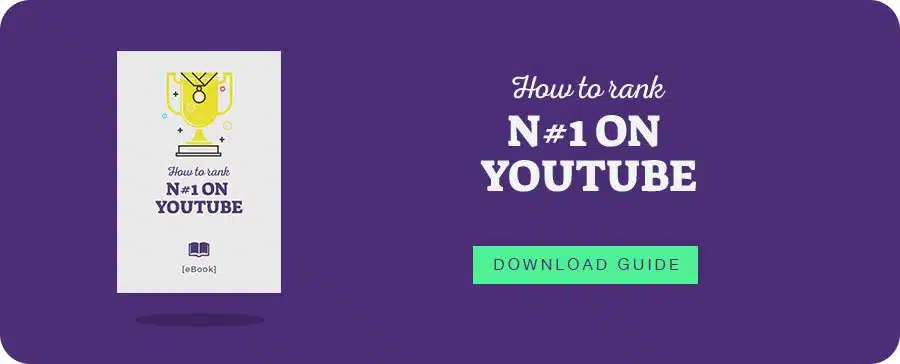How to Analyze Your Video Analytics to Get The Best Results
19/02/18
Author: Victor Marin
9 min reading
Analytics

Oh well… so now you have produced various explainer videos pursuing various objectives as part of your video marketing strategy. Each one of those videos is generating its own set of reactions. And those reactions translate to video analytics –too many of them indeed
It’s difficult at first to gain a sense of what you should do with all of this data. You may not know which video analytics can relate to a particular marketing objective, for example. So now it’s the time to pick your fights –you must select which metric you’re going to focus on. But first, you need to understand every metric in order to make that decision.
You may relax, by the way! Here at Yum Yum Videos, we are in charge of helping you, so feel free to sit down and take notes. We will handle the description of each metric you need to consider to properly analyze the success of your video marketing campaign.
Table of Contents
The definition of success predates its measurement
Before you get into the complex waters of video analytics, you need to do something before even making your video –you need to determine the parameters that will be measured later in order to make an acute evaluation of your marketing campaign.
- Objectives: what is it exactly that you’re pursuing? Focus on one particular goal–alright, you can make two, but make sure those two objectives are as clear as you can make them.
- Audience: who are you talking to? Make sure you have a very good idea of the type of people you’re addressing. The better defined your audience is, the more impactful your marketing tactics will become!
- Metrics: choose only a small set of metrics –and choose only useful ones. This group will get all of your attention because it will be the one that will provide you with the most significant information.
Alright, so now you have every single parameter defined. Great! Let’s get into metrics, baby!
Measure “views” to gain perspective
How many times your video has been viewed –this is precisely what Views tells you. As you may have guessed, this is a particularly raw metric –maybe the rawest of all.
This is only the beginning of your evaluation; please keep that in mind, so don’t make any conclusions yet -we’re only scratching the surface here. Just focus on taking an adequate register of this metric and prepare to obtain deeper insights.
Views are defined differently by every platform, so don’t precipitate to run into erroneous calculations: a view for YouTube is only admitted after 30 seconds of a video has been watched; for Facebook, that time is only 3 seconds.
Measure “Engagement” and you will get quality
Marketers just seem to love “Engagement”. But wait a second, what does that represent? Why is it so favored in the industry? Simply put: it measures the progress of a view -in other words, the percentage of a view by a particular visitor. These metrics extend the measurement of the view count to indicate the quality of every view.
This metric is a catalyzer for many readings associated with the measurement of the engagement the viewer may have felt while watching the message that’s been told in your video.
If you get a high engagement, then your message is getting to your viewers –and that message is being consumed. This tells you whether the content of your video is being processed by whoever’s watching it.
If you get a low engagement, please don’t let that get to you. There are plenty of distractions on the Web that may drag your viewers away from watching your material. Just because a viewer didn’t get to watch your video completely, that doesn’t mean that they didn’t engage with it. You could also think that they were engaged for a few seconds, so they may return to your offer later!
Measure “Play Rate” and you’ll obtain relevance
Page views and play count are a couple of metrics you will be given by embedding your video on your site. If you put these two together, then you get the Play Rate, which indicates the percentage of viewers who went to your site and then decided to watch your video by hitting play.
If you really want to know how your visitors are responding to your video, then you can do no wrong by looking at this metric. If that weren’t enough, take into account that this metric will help you implement adjustments on the sections of your website if you’re aiming at getting people to feel motivated to watch the video and ideally follow the call-to-action you have designed for your marketing goals.
The Play Rate tells you a lot about how your website is performing in terms of becoming a fertile ground for conversions.
It’s all about context when you sit down and analyze the data provided by the Play Rate, so get prepared to start making adjustments to enhance the power of your website. Remember that, when it comes to success, trial and error can do great things for you, so follow that through several options for the placement of your video.
Measure “Shares” and you’ll get an understanding of the social potential of your video
Sharing something that you liked on the Internet seems to be a natural consequence of consuming content nowadays. You may watch something on your own, but if you get to share it, then it becomes a collective event.
Making your video shareable is mandatory. It automatically extends the power of your video by getting to more people than you first expected. Sharing your video improves the reach of your message.
If your video ended up being more popular on a social network, that means that your message found a better niche there. Don’t forget that every result will bring light to a certain capacity of your campaign.
On the contrary, if your video is not doing well on a particular outlet, that doesn’t mean it’s entirely a failure. It just means that it didn’t work for that channel. Identify its more convenient outlet and try to take advantage of that success!
Also, consider word-of-mouth, a concept that even when it may be underestimated by some marketers, it certainly deserves your energy. Examine every single piece of information by every share. What are your viewers saying about your video? What do they like? What’s making the strongest impression? Write everything down! Lots of people consider this data subjective, but at the end of the day, it’s giving you something you can analyze further!
Measure “CTR” if you want to study reactions
Click-through rates indicate the amount of people who click on the call-to-action (CTA) you initially crafted for your video. Do you really want to know if your video is killing it at engaging your viewers? Then, you need to look closely at this metric. Having a high CTR means you have crafted a compelling story, that your viewers are watching your video, and that they feel encouraged to take the specific action you told them to!
Analyzing your video from the point of view of the CTR reveals the capacity of your video for enhancing sales and conversions, so take proper note of what this metric is saying to gain a good understanding of the commercial potential of your campaign.
This is a good example: if you know that a lot of viewers are sticking until the end of your video, but they fail to take action, then you definitely need to change the placement of your CTA. Any evaluation should lead you to improve, so the quality of the information you’re reporting will define the quality of the decision taken upon that information.
Measure “Conversion Rate” to determine if you find the treasure
The Conversion Rate is considered by many as the most important metric –it is a direct measurement of the amount of leads or clients you achieved through your video. This is the final result: this is how many viewers transformed into leads.
The importance of this metric is defined by its complexity: getting a proper number demands that you work with other analytics devices like Google Analytics. Take this metric seriously, please, so make an effort to get it right the first time.
We strongly recommend that you start off by setting a good definition of what “conversion” represents for your marketing efforts, so ask yourself: what does it mean? Is it someone who followed your CTA? Is it someone who just visited your website? Is it someone who bought something? Having a good definition will prevent you from getting confusing information.
Anything written on your sheet of results should be clear. We’re talking about the most important metric, after all, so don’t take it lightly. Focus on developing efficient strategies before getting any results. That way, in the end, you will only have trustworthy interpretations.
In a nutshell, know success first so you can identify it later!
We all want to know if our efforts have paid off. The thing is, you need to define the parameters that will allow you to measure if you were successful indeed. Explainer videos provide you with tons of data, but you need to narrow your focus: just pay attention to the most eloquent numbers. Define the qualities of your success so you can measure it. At the end of the day, that’s the genuine power of video analytics: they enable you to conceive and apply successful marketing campaigns!









